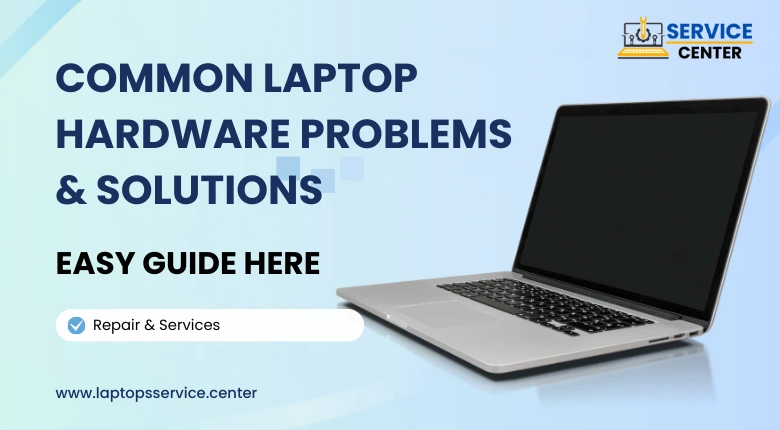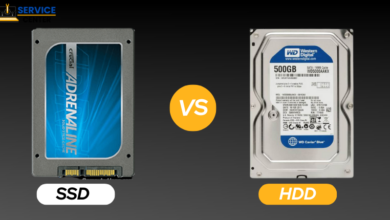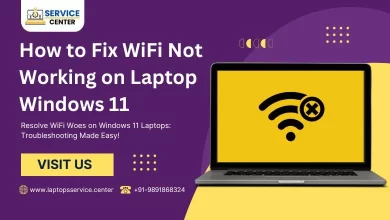Laptop Hardware Problems: Solutions for Common Issues

Laptop hardware problems revolves around identifying and addressing common issues related to the physical components of a laptop. Laptops, like any electronic device, are susceptible to various hardware malfunctions that can impact performance and user experience. These problems may include overheating, battery drain, keyboard malfunctions, screen issues, and more. Understanding and resolving these hardware problems are essential to ensure the laptop’s optimal functionality and longevity. In this context, the blog aims to provide practical solutions and tips for users to troubleshoot and potentially resolve these common hardware issues.
Overheating: Causes and Solutions
“Overheating: Causes and Solutions” is a blog topic that focuses on one of the common laptop hardware problems. When laptops overheat, it can lead to performance issues, potential damage to internal components, and even system crashes. Understanding the causes of overheating and implementing effective solutions are crucial to maintaining optimal laptop performance and prolonging its lifespan.
Causes of Overheating in Laptops:
Dust Accumulation: Over time, dust and debris can accumulate inside the laptop, clogging the cooling system and obstructing airflow, leading to overheating.
Inadequate Ventilation: Poorly designed cooling systems or obstructed ventilation areas can hinder proper heat dissipation, causing temperatures to rise.
Intensive Tasks: Running demanding applications or heavy multitasking can put a significant strain on the laptop’s hardware, generating more heat.
Old or Malfunctioning Fans: A laptop’s cooling fans play a critical role in dissipating heat. If they are worn out or malfunctioning, heat can build up inside the laptop.
Solutions to Overheating:
Cleaning the Cooling System: Regularly clean the laptop’s cooling system, including the fans and vents, to remove dust and debris that may impede airflow.
Using Cooling Pads: Consider using cooling pads or laptop cooling stands with built-in fans to provide additional airflow to the laptop’s underside.
Elevating the Laptop: Placing the laptop on an elevated surface, such as a book or a laptop stand, can improve airflow and aid in cooling.
Optimizing Power Settings: Adjust the laptop’s power settings to limit CPU performance when not required, reducing the generation of excess heat.
Avoiding Overuse on Soft Surfaces: Refrain from using the laptop on soft surfaces like beds and couches, as they can block ventilation and cause overheating.
Updating Device Drivers: Ensure that all device drivers, including those for the CPU and GPU, are up to date, as newer drivers often include optimizations for better heat management.
Reducing Intensive Tasks: When possible, avoid running multiple resource-intensive applications simultaneously to reduce the strain on the hardware.
Proper heat management is essential for optimal laptop performance and is crucial in dealing with the challenge of laptop hardware problems, particularly overheating.
Battery Drain and Charging Issues
Battery drain and charging issues is a significant topic focusing on common laptop hardware problems related to battery performance. When laptops experience battery drain or charging problems, it can lead to inconvenience and hinder the laptop’s portability and usability. Understanding the causes behind battery-related issues and implementing appropriate solutions are essential to ensure reliable battery performance and maximize the laptop’s battery lifespan.
Causes of Battery Drain and Charging Issues:
Battery Aging: Over time, laptop batteries naturally degrade, leading to reduced capacity and shorter battery life.
Background Apps and Processes: Certain background applications and processes may consume excessive power, contributing to faster battery drain.
Faulty Charging Circuit: A faulty charging circuit or damaged charging port can prevent the battery from charging properly.
Incompatible or Damaged Charger: Using an incompatible or damaged charger can lead to slow charging or inadequate power delivery to the battery.
Solutions to Battery Drain and Charging Issues:
Battery Care and Calibration: Regularly calibrate the battery to improve its accuracy and extend its overall lifespan.
Power Management: Adjust power settings and disable unnecessary background processes to reduce battery consumption.
Replace Aging Battery: If the battery’s capacity has significantly reduced, consider replacing it with a new one to restore full performance.
Check Charging Components: Inspect the charging cable, charging port, and charger for any damage or debris that may impede charging.
Use Genuine Chargers: Always use genuine chargers and compatible accessories recommended by the laptop manufacturer.
Update Drivers and BIOS: Ensure that the laptop’s battery-related drivers and BIOS are up to date to optimize charging and battery management.
Power-Saving Modes: Utilize power-saving modes provided by the operating system to extend battery life during critical tasks.
Managing battery performance is crucial in dealing with the challenge of laptop hardware problems, particularly those related to battery longevity and power management.
Read Also: Hp Troubleshooting an HP Pavilion Laptop Not Charging
Screen Problems: Flickering and Black Screens
Laptop hardware problems can manifest in various ways, and ‘Screen Problems: Flickering and Black Screens’ is a common issue that users may encounter. Flickering screens can be distracting and may result from issues like faulty graphics drivers or loose connections. On the other hand, facing a black screen can be quite concerning, especially if the laptop appears unresponsive. This problem could stem from graphics card malfunctions, operating system errors, or even a failing display.
Diagnosing and troubleshooting these screen problems are essential to identify the root cause and apply appropriate solutions. Ensuring that the laptop’s graphics drivers are up to date and checking for loose cables can often resolve flickering screens, while black screens may necessitate more in-depth troubleshooting or professional assistance. Properly addressing screen problems is essential for a seamless and productive laptop experience.
Touchpad and Mouse Pointer Troubles
Laptop hardware problems can also extend to issues with the touchpad and mouse pointer, which can be frustrating for users. Troubles with the touchpad may manifest as erratic cursor movements, unresponsiveness, or accidental taps. These problems could arise from driver conflicts, incorrect settings, or physical damage to the touchpad. Additionally, users may encounter difficulties with the external mouse pointer, where the mouse cursor may freeze or disappear altogether. Such issues may result from driver issues, connectivity problems, or conflicting software.
Resolving these touchpad and mouse pointer troubles is vital for smooth navigation and efficient use of the laptop. Users can attempt to update touchpad drivers, adjust touchpad settings, or check for hardware damage to resolve touchpad issues. For external mice, updating drivers and checking USB connections may help alleviate mouse pointer problems. Addressing these hardware problems ensures an enhanced user experience and greater productivity on laptops.
Keyboard Malfunctions
Common laptop hardware problems that can significantly impact user experience and productivity. When a laptop’s keyboard malfunctions, it can lead to unresponsive keys, repeated keystrokes, or even a completely non-functional keyboard. Understanding the causes behind keyboard malfunctions and implementing appropriate solutions are essential to restore smooth and efficient typing functionality.
Causes of Keyboard Malfunctions:
Dust and Debris: Dust and debris can accumulate beneath the keys over time, causing them to stick or become unresponsive.
Liquid Spills: Accidental spills of liquids, such as water or beverages, can seep into the keyboard, leading to key malfunction.
Physical Damage: Dropping the laptop or applying excessive force to the keys can result in physical damage, affecting their responsiveness.
Driver Issues: Outdated or corrupted keyboard drivers can lead to erratic behavior or non-functioning keys.
Solutions to Keyboard Malfunctions:
Cleaning the Keyboard: Carefully clean the keyboard, removing dust and debris to restore proper key functionality. Use compressed air or a soft brush for effective cleaning.
Handling Liquid Spills: In the event of a liquid spill, immediately power off the laptop, disconnect the charger, and invert the laptop to allow the liquid to drain. Let the laptop dry thoroughly before use.
Replacing Damaged Keys: If individual keys are physically damaged, consider replacing them with new ones. Many laptop manufacturers provide replacement keys or keyboard kits.
Updating Keyboard Drivers: Ensure that the laptop’s keyboard drivers are up to date. If necessary, reinstall or update the drivers to resolve software-related issues.
External Keyboard: If the laptop’s built-in keyboard is beyond repair, using an external USB keyboard can provide a temporary solution for typing.
Keyboard Test: Use online keyboard test tools or built-in keyboard diagnostic tools to identify specific malfunctioning keys and assess the overall keyboard health.
A fully functional keyboard is crucial for productivity, making the resolution of keyboard malfunctions a vital aspect of dealing with laptop hardware problems related to typing and input functionality.
Hard Drive and Storage Problems
Laptop hardware problems can also manifest as hard drive and storage issues, which can be a significant concern for users. Hard drive problems may lead to slow system performance, data corruption, or even complete data loss. These issues can occur due to physical damage, bad sectors on the hard drive, or outdated storage drivers. Additionally, insufficient storage space can hinder the laptop’s functionality and restrict users from saving important files and applications.
It is crucial to address hard drive and storage problems promptly to ensure the integrity of valuable data and maintain optimal laptop performance. Users can consider performing disk cleanup, defragmentation, or upgrading to solid-state drives (SSDs) to resolve these hardware-related storage issues, allowing for a more reliable and efficient laptop experience.
Conclusion
Addressing laptop hardware problems with effective solutions is essential for ensuring optimal performance, extending the laptop’s lifespan, and providing a seamless user experience. From overheating and battery drain to keyboard malfunctions and screen issues, understanding the causes behind these common problems empowers users to take proactive measures to resolve them. Regular maintenance, such as cleaning the cooling system and calibrating the battery, can significantly impact laptop performance.
By actively addressing these hardware issues, users can optimize their laptop’s functionality, reduce downtime, and avoid costly repairs. A pro active approach to laptop hardware problems promotes productivity, reliability, and overall satisfaction with the device, ensuring that users make the most out of their laptops for years to come.







